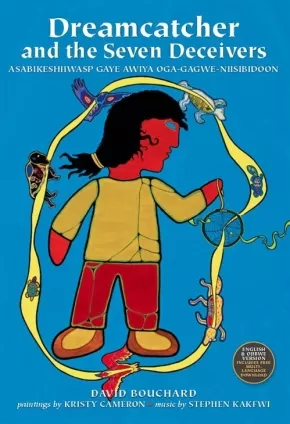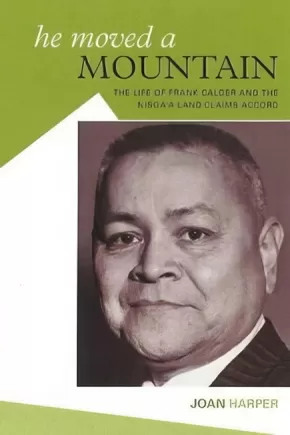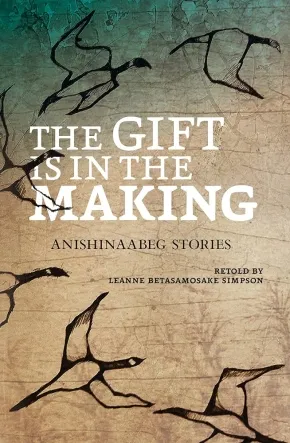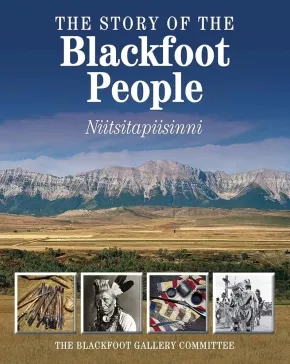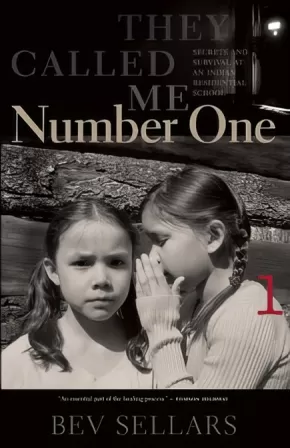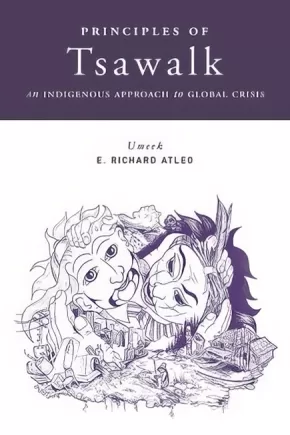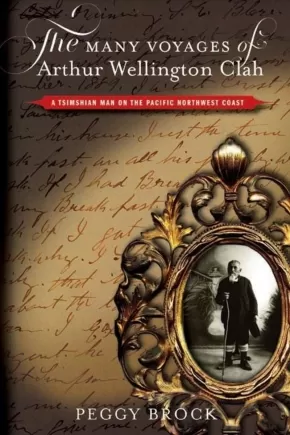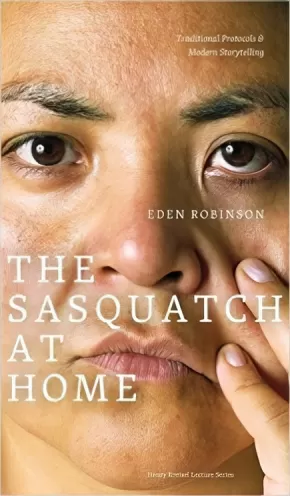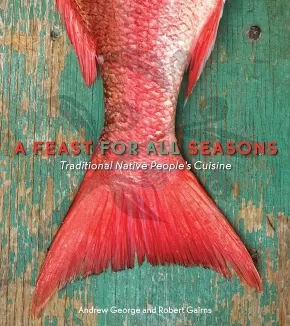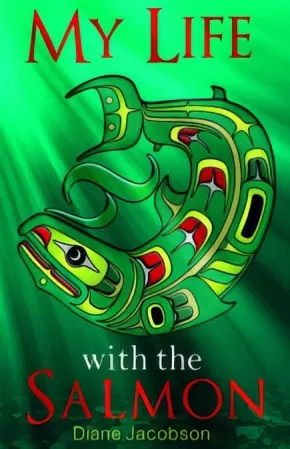
First Nations
211
-
225
of
244 Results;
Sort By
Go To
of 17
Disinherited Generations
$27.99
Format:
Paperback
Text Content Territories:
Indigenous Canadian; First Nations; Cree (Nehiyawak); Plains Cree; Saddle Lake Cree Nation ;
Reading Level: N/A
ISBN / Barcode: 9780888646422
Synopsis:
Synopsis:
This oral autobiography of two remarkable Cree women tells their life stories against a backdrop of government discrimination, First Nations activism, and the resurgence of First Nations communities. Nellie Carlson and Kathleen Steinhauer, who helped to organize the Indian Rights for Indian Women movement in western Canada in the 1960s, fought the Canadian government's interpretation of treaty and Indigenous Rights, the Indian Act, and the male power structure in their own communities in pursuit of equal rights for Indigenous women and children. After decades of activism and court battles, First Nations women succeeded in changing these oppressive regulations, thus benefitting thousands of their descendants. Those interested in human rights, activism, history, and Indigenous Studies will find that these personal stories, enriched by detailed notes and photographs, form a passionate record of an important, continuing struggle.
Additional Information
216 pages | 6.00" x 9.00"
Dreamcatcher and the Seven Deceivers
$21.95
Artists:
Format:
Hardcover
Text Content Territories:
Indigenous Canadian; First Nations; Inuit; Métis;
Grade Levels: 5;
ISBN / Barcode: 9780978432799
Synopsis:
Synopsis:
Dreamcatcher and the Seven Deceivers, the sequel to the Seven Sacred Teachings, warns of voices we can expect to hear in our dream time – voices that do not represent the Sacred Teachings.
These are the voices of Seven Deceivers who are spoken of by name. The allure of their whisperings is carefully spelled out in order that all might come to know what to listen for. Dreamcatcher and the Seven Deceivers is a carefully woven telling of how and why Creator sent Trickster to Turtle Island with a gift that would help us see the light and resist temptation. At a time before distant religions and churches came with their teachings, their commandments and their seven cardinal sins, we knew. We knew the way of the Good Red Road. We knew the right way to live; not through commandments but through Sacred Teachings – Teachings that were given to us long before their arrival. And we knew we would be tested by Seven Deceivers – what they called seven cardinal sins. We knew because we had been forewarned. And when these distant churches arrived with their teachings, their relics and their symbols, we had our own. One was the Dreamcatcher.
Rooted in humility and honesty, the creators have tried to respect the cultures and traditions of all peoples. It is our hope that this telling will unite and thus heal divisions. Prophecies tell that this is the time for One Heart, One Mind and One Drum. We, readers and authors alike, are the ones we have been waiting for. There is nobody else who can revitalize our culture and values except ourselves.
It is our hope that this telling might move readers toward greater courage and wisdom and ultimately toward achieving and understanding what is true in life’s journey.
The Seven Sacred Teachings are a link that ties all Native, Inuit and Métis communities together.
Educator Information
Available in French HERE!
Additional Information
35 pages
He Moved A Mountain
$21.95
Format:
Paperback
Text Content Territories:
Indigenous Canadian; First Nations; Nisga'a;
ISBN / Barcode: 9781553802273
Synopsis:
Synopsis:
Dr. Frank Arthur Calder of BC's Nisga'a First Nation was the first aboriginal person to be elected to any Canadian governing body. For twenty-six years he served as an MLA in the legislature of British Columbia. He was the driving force behind Canada's decision to grant recognition of aboriginal land title to First Nations people throughout the country. He accomplished this goal by guiding the controversial request through a series of court cases, finally to the Supreme Court of Canada, achieving success when Parliament, in an all-party resolution, passed a measure recognizing indigenous title. Because of this historic decision, Canada serves as a resource for other aboriginal populations in countries where similar accommodations for aboriginal people have not yet been made. Calder received many honours in his lifetime, including the Order of Canada. The one he most cherished, however, was one rarely bestowed by the Nisga'a Nation: "Chief of Chiefs." While growing up, Frank went to grade 10 in residential school, completed high school and then graduated from the University of BC (in the Anglican Theological College). It took him two years longer than usual to complete university, as he had to return home during the fishing season to earn the money for his tuition.
Real Justice: Convicted for Being Mi'kmaq: The Story of Donald Marshall Jr.
$12.95
Format:
Paperback
Text Content Territories:
Indigenous Canadian; First Nations; Mi'kmaq;
ISBN / Barcode: 9781459404397
Synopsis:
Synopsis:
When a black teen was murdered in a Sydney, Cape Breton park late one night, his young companion, Donald Marshall Jr., became a prime suspect. Sydney police coached two teens to testify against Donald which helped convict him of a murder he did not commit. He spent 11 years in prison until he finally got a lucky break. Not only was he eventually acquitted of the crime, but a royal commission inquiry into his wrongful conviction found that a non-aboriginal youth would not have been convicted in the first place. Donald became a First Nations activist and later won a landmark court case in favour of native fishing rights. He was often referred to as the "reluctant hero" of the Mi'kmaq community.
Reviews
"Bill Swan presents a straightforward, compelling narrative, easily followed, that will astound today's teenagers." — Joan Marshall, Resource Links
"the important subject matter, meticulous research, and ultimately balanced portrait of the flawed man Marshall was makes this an engrossing and enlightening read for curious teens."— CM: Canadian Review of Materials
"Much of this disturbing but well-researched book is impressively drawn directly from court documents and is part of the valuable Real Justice series, which features wrongfully accused Canadian youth and their fight for freedom."— Booklist Online
Educator Information
Interest age: From 13 To 17
Fry Reading Level [grade]: 5.0
Lexile Reading Level: HL770L
Additional Information
184 pages | 5.50" x 8.50"
The Gift is in the Making: Anishinaabeg Stories
$22.00
Format:
Paperback
Text Content Territories:
Indigenous American; Native American; Anishinaabeg;
ISBN / Barcode: 9781553793762
Synopsis:
Synopsis:
The Gift Is in the Making retells previously published Anishinaabeg stories, bringing to life Anishinaabeg values and teachings to a new generation. Readers are immersed in a world where all genders are respected, the tiniest being has influence in the world, and unconditional love binds families and communities to each other and to their homeland. Sprinkled with gentle humour and the Anishinaabe language, this collection of stories speaks to children and adults alike, and reminds us of the timelessness of stories that touch the heart.
Educator & Series Information
This book is part of The Debwe Series.
Recommended for grades 5 to 9.
Additional Information
99 pages | 5.50" x 8.50"
The Story of the Blackfoot People: Nitsitapiisinni
$19.95
Format:
Paperback
Text Content Territories:
Indigenous American; Native American; Blackfoot Confederacy (Siksikaitsitapi); Indigenous Canadian; First Nations; Blackfoot Confederacy (Siksikaitsitapi);
ISBN / Barcode: 9781770851818
Synopsis:
Synopsis:
For the first time in history, the Blackfoot people share their culture, beliefs and traditions with the rest of the world.
In an innovative partnership with the Glenbow Museum in Calgary, Alberta, a team of elders and spiritual leaders from the Blackfoot community agreed to share their history, traditions and artifacts in an effort to document their lives. The Story of the Blackfoot People: Nitsitapiisinni is the first piece of permanent documentation written by the leaders of the Blackfoot community about their lives both past and present.
This book chronicles all the important aspects of Blackfoot life and history. The book begins by exploring the fundamental belief systems of the Blackfoot including their traditional stories, sacred places, dances and ceremonies. Strong relationships are recognized by the Blackfoot as one of the most important keys to survival and the roles of men, women, children and elders, and their sacred connection to nature and their environment, are examined in detail. Less harmonious relationships are also candidly explored including relations between the Blackfoot people and the governments of the United States and Canada. In its moving conclusion, the Blackfoot community discusses the importance of uniting ancient traditions with modern challenges in order for their legacy to survive.
Revealing the enduring strength and fortitude of spirit of the Blackfoot people, this book will have meaning for both native and non-native readers alike.
Authenticity Note: This work is labelled as containing Authentic Indigenous Text because of the contributions from elders and other Indigenous peoples.
They Called Me Number One: Secrets and Survival at an Indian Residential School
$19.95
Format:
Paperback
Text Content Territories:
Indigenous Canadian; First Nations; Salish; Interior Salish; Secwepemc (Shuswap); Xat’sull (Soda Creek);
ISBN / Barcode: 9780889227415
Synopsis:
Synopsis:
Like thousands of Aboriginal children in Canada, and elsewhere in the colonized world, Xatsu'll chief Bev Sellars spent part of her childhood as a student in a church-run residential school.
These institutions endeavored to "civilize" Native children through Christian teachings; forced separation from family, language, and culture; and strict discipline. Perhaps the most symbolically potent strategy used to alienate residential school children was addressing them by assigned numbers only-not by the names with which they knew and understood themselves.
In this frank and poignant memoir of her years at St. Joseph's Mission, Sellars breaks her silence about the residential school's lasting effects on her and her family-from substance abuse to suicide attempts-and eloquently articulates her own path to healing. 'Number One' comes at a time of recognition-by governments and society at large-that only through knowing the truth about these past injustices can we begin to redress them.
Awards
- 2014 Burt Award Third Place Winner
Educator Information
Grades 10-12 BC English First Peoples resource for the unit Place-Conscious Learning - Exploring Text through Local Landscape.
Additional Information
256 pages | 5.67" x 8.20"
Aboriginal Music in Contemporary Canada: Echoes and Exchanges
$55.00
Editors:
Format:
Hardcover
Text Content Territories:
Indigenous Canadian; First Nations; Inuit; Métis;
ISBN / Barcode: 9780773539518
Synopsis:
Synopsis:
First Nations, Inuit, and Métis music in Canada is dynamic and diverse, reflecting continuities with earlier traditions and innovative approaches to creating new musical sounds. Aboriginal Music in Contemporary Canada narrates a story of resistance and renewal, struggle and success, as indigenous musicians in Canada negotiate who they are and who they want to be. Comprised of essays, interviews, and personal reflections by Aboriginal and non-Aboriginal musicians and scholars alike, the collection highlights themes of innovation, teaching and transmission, and cultural interaction. Individual chapters discuss musical genres ranging from popular styles including country and pop to nation-specific and intertribal practices such as powwows, as well as hybrid performances that incorporate music with theatre and dance. As a whole, this collection demonstrates how music is a powerful tool for articulating the social challenges faced by Aboriginal communities and an effective way to affirm indigenous strength and pride. Juxtaposing scholarly study with artistic practice, Aboriginal Music in Contemporary Canada celebrates and critically engages Canada's vibrant Aboriginal music scene. Contributors include Véronique Audet (Université de Montreal), Columpa C. Bobb (Tsleil Waututh and Nlaka'pamux, Manitoba Theatre for Young People), Sadie Buck (Haudenosaunee), Annette Chrétien (Métis), Marie Clements (Métis/Dene), Walter Denny Jr. (Mi'kmaw), Gabriel Desrosiers (Ojibwa, University of Minnesota, Morris), Beverley Diamond (Memorial University), Jimmy Dick (Cree), Byron Dueck (Royal Northern College of Music), Klisala Harrison (University of Helsinki), Donna Lariviere (Algonquin), Charity Marsh (University of Regina), Sophie Merasty (Dene and Cree), Garry Oker (Dane-zaa), Marcia Ostashewski (Cape Breton University), Mary Piercey (Memorial University), Amber Ridington (Memorial University), Dylan Robinson (Stó:lo, University of Toronto), Christopher Scales (Michigan State University), Gilles Sioui (Wendat), Gordon E. Smith (Queen's University), Beverly Souliere (Algonquin), Janice Esther Tulk (Memorial University), Florent Vollant (Innu) and Russell Wallace (Lil'wat).
Additional Information
520 pages | 6.14" x 9.25"
Authenticity Note: While the editors of this book are not Indigenous, the majority of contributors are Indigenous; therefore, this book has received the Authentic Indigenous Text label.
Great Writers from our First Nations
$10.95
Format:
Paperback
Text Content Territories:
Indigenous American; Indigenous Canadian;
ISBN / Barcode: 9781926920856
Synopsis:
Synopsis:
A celebration of ten writers who have challenged stereotypes, told history from a perspective often silenced, and entertained millions of readers.
Included is author Louise Erdrich, whose novel Love Medicine was the first in an award-winning series about the lives of several generations of Ojibwa families. Sherman Alexie, author of the semi-autobiographical The Absolutely True Diary of a Part-Time Indian, went on to win the National Book Award. Tomson Highway broke new ground with his play The Rez Sisters. Joseph Boyden based his novel Three Day Road in part on his grandfather’s experience fighting in the First World War. N. Scott Momaday re-wrote the history of the American West with his book House Made of Dawn. Nicola Campbell drew on her family’s experience of residential schools to write the children’s books Shi-shi-etko and Shin-chi’s Canoe. Also included are Marilyn Dumont (A Really Good Brown Girl), Tim Tingle (Walking the Choctaw Road), Joseph Bruchac (Buffalo Song), and Maria Campbell (Half-breed).
The full list of writers profiled:
• Sherman Alexie (Spokane/Coeur d’Alene, Washington) - The Absolutely True Diary of a Part-Time Indian
• Louise Erdrich (Ojibwa, North Dakota) - Love Medicine (the Argus Series)
• Joseph Boyden (Cree/Métis, Ontario) - Three Day Road
• N. Scott Momaday (Kiowa/Cherokee, Oklahoma) - House Made of Dawn
• Marilyn Dumont (Cree/Métis, Alberta) - A Really Good Brown Girl
• Tomson Highway (Cree, Manitoba) - The Rez Sisters
• Joseph Bruchac (Abenaki, New York State) - Buffalo Song
• Maria Campbell (Métis, Saskatchewan) - Halfbreed
• Nicola Campbell (Interior Salish/Métis, Alberta) - Shin-chi’s Canoe
• Tim Tingle (Choctaw, Texas) - Walking the Choctaw Road
Educator & Series Information
This book is part of the First Nations Series for Young Readers. Each book is a collection of biographies of First Nations, Métis, and Inuit women and men who are leaders in their fields of work, in their art, and in their communities.
For ages 9-14.
Additional Information
128 pages | 6.00" x 9.00"
Manitowapow: Aboriginal Writings from the Land of Water
$35.00
Editors:
Format:
Paperback
Text Content Territories:
Indigenous Canadian; First Nations; Inuit; Métis;
ISBN / Barcode: 9781553793076
Synopsis:
Synopsis:
This anthology of Aboriginal writings from Manitoba takes readers back through the millennia and forward to the present day, painting a dynamic picture of a territory interconnected through words, ideas, and experiences. A rich collection of stories, poetry, nonfiction, and speeches, it features:
- Historical writings, from important figures.
- Vibrant literary writing by eminent Aboriginal writers.
- Nonfiction and political writing from contemporary Aboriginal leaders.
- Local storytellers and keepers of knowledge from far-reaching Manitoba communities.
- New, vibrant voices that express the modern Aboriginal experiences.
- Anishinaabe, Cree, Dene, Inuit, Métis, and Sioux writers from Manitoba.
Educator & Series Information
Created in the spirit of the Anishinaabe concept debwe (to speak the truth), The Debwe Series is a collection of exceptional Aboriginal writing from across Canada. Manitowapow, a one-of-a-kind anthology, is the first book in The Debwe Series. Manitowapow is the traditional name that became Manitoba, a word that describes the sounds of beauty and power that created the province.
Recommended for grades 11 and 12, university students, and adults.
Additional Information
416 pages | 6.00" x 9.00"
Principles of Tsawalk: An Indigenous Approach to Global Crisis
$32.95
Format:
Paperback
Text Content Territories:
Indigenous Canadian; First Nations; Nuu-chah-nulth (Nootka);
Reading Level: N/A
ISBN / Barcode: 9780774821278
Synopsis:
Synopsis:
Tsawalk, or “one,” expresses the Nuu-chah-nulth view that all living things – human, plant, and animal – form part of an integrated whole brought into harmony through constant negotiation and mutual respect. In this book, Umeek argues that contemporary environmental and political crises and the ongoing plight of indigenous peoples reflect a world out of balance, a world in which Western approaches for sustainable living are not working. Nuu-chah-nulth principles of recognition, consent, and continuity, by contrast, hold the promise of bringing greater harmony, where all life forms are treated with respect and accorded formal constitutional recognition.
Additional Information
220 pages | 6.00" x 9.00" | Paperback
The Many Voyages of Arthur Wellington Clah: A Tsimshian Man on the Pacific Northwest Coast
$29.95
Format:
Paperback
Text Content Territories:
Indigenous Canadian; First Nations; Tsimshian (Ts'msysen);
Reading Level: N/A
ISBN / Barcode: 9780774820066
Synopsis:
Synopsis:
First-hand accounts of Indigenous people’s encounters with colonialism are rare. A daily diary that extends over fifty years is unparalleled. Based on a transcription of Arthur Wellington Clah’s diaries, this book offers a riveting account of a Tsimshian man who moved in both colonial and Aboriginal worlds. From his birth in 1831 to his death in 1916, Clah witnessed profound change: the arrival of traders, missionaries, and miners, and the establishment of industrial fisheries, wage labour, and reserves. His many voyages – physical, cultural, and spiritual – provide an unprecedented Aboriginal perspective on colonial relationships on the Pacific Northwest Coast.
Drawing on a painstaking transcription of Arthur Wellington Clah’s diaries, Peggy Brock pieces together the many voyages -- physical, cultural, intellectual, and spiritual -- of a Tsimshian man who moved in both colonial and Aboriginal worlds. Clah’s birth in 1831 coincided with the establishment of a permanent fur trade post, and he became student, teacher, and confidant to missionary William Duncan. Later, Clah’s spiritual voyage into the world of colonial culture transformed him into a devout Christian and an evangelist for the faith.
From the goldfields of BC and Alaska to the hop fields of Washington State, Clah witnessed profound change. His diaries reveal the complexities of personal interactions between colonizers and the colonized and the inevitable tensions within a community undergoing rapid change. They also show how Clah’s hopes for his people were gradually eroded by the realities of land dispossession, interference by the colonial state in cultural and political matters, and diminishing economic opportunities.
Taken together, Clah’s many voyages offer an unprecedented Aboriginal perspective on colonial relationships as they played out on the Pacific Northwest Coast.
This book is required reading for students and scholars of indigenous peoples and colonialism and anyone interested in BC or Canadian history.
Reviews
"The Many Voyages of Arthur Wellington Clah is a striking book offering an on-the-ground viewpoint of colonialism as it evolved on the Pacific Northwest Coast of Canada." - Susan Neylan, Wilfrid Laurier University, Journal of Colonialism and Colonial History, V. 13, No 2, Fall 2012
"A fascinating account...Peggy Brock has made a truly significant contribution to our understanding of the history of the northwest coast in the nineteenth century." - Robin Fisher, Mount Royal University, International Journal of Maritime History, Vol XXIV No 3
"Arthur Wellington Clah’s diary is likely the most remarkable document to come into the light of Pacific Northwest Coast history ... Surmounting the challenges presented by this rich and at times near impenetrable personal record, Peggy Brock has researched and admirably summarized fifty years of the diary, pulling out key themes and highlighting its many contradictions. This much-needed introduction to a man and an indigenous history of British Columbia and Alaska will change the way we think about our past." - John S. Lutz, author of Makúk: A New History of Aboriginal-White Relations
Clah’s life and diary offer a window into the lives of the Tsimshian political hierarchy of the time and Tsimshian society’s interaction with colonialism ... His voyage is a metaphor for the voyage that his own and other indigenous people were also taking in their encounters with colonialism." - Neil Sterritt, consultant in Aboriginal leadership and governance
Additional Information
324 pages | 6.00" x 9.00" | 19 photographs, 4 maps | Paperback
The Sasquatch at Home
$12.99
Format:
Paperback
Text Content Territories:
Indigenous Canadian; First Nations; Haisla (Kitamaat); Heiltsuk (Bella Bella);
Grade Levels: 12; University/College;
ISBN / Barcode: 9780888645593
Synopsis:
Synopsis:
In March 2010 the Canadian Literature Centre hosted award-winning novelist and storyteller Eden Robinson at the 4th annual Henry Kreisel Lecture. Robinson shared an intimate look into the intricacies of family, culture, and place through her talk, "The Sasquatch at Home." Robinson's disarming honesty and wry irony shine through her depictions of her and her mother's trip to Graceland, the potlatch where she and her sister received their Indian names, how her parents first met in Bella Bella (Waglisla, British Columbia) and a wilderness outing where she and her father try to get a look at b'gwus, the Sasquatch. Readers of memoir, Canadian literature, Aboriginal history and culture, and fans of Robinson's delightful, poignant, sometimes quirky tales will love The Sasquatch at Home.
Reviews
"[Eden Robinson's] lecture reprises the Sasquatch theme from her novel, Monkey Beach. It is less a lecture than an extended poem – a love song to a place and people, a celebration of survival of places, names, and humans.... The work is filled with alternate narratives. Just when we are eagerly following a line of story or thought, out come Trickster-ish turns and teases.... Robinson seductively draws outsiders in, then sharply clarifies the limits of the welcome.... Eden Robinson brings her own literary ethics to the discussion [of the limits of cross-cultural sharing]. Her consciousness and conscientiousness permeate her fiction as well as the Sasquatch lecture. It is fitting that Paula Simons calls her 'one of Canada’s most provocative and talented writers' and also 'a moral and cultural force'." -Valerie Alia, Cantext, February 2012
Additional Information
64 pages | 14.00" x 23.00"
A Feast for All Seasons: Traditional Native Peoples' Cuisine
$24.95
Format:
Paperback
Text Content Territories:
Indigenous Canadian;
ISBN / Barcode: 9781551523682
Synopsis:
Synopsis:
Traditional North American Native peoples' cuisine has existed for centuries, but its central tenet of respecting nature and its bounty have never been as timely as they are now. Andrew George, of the Wet'suwet'en Nation in Canada, is a well-respected aboriginal chef and instructor who has spent the last twenty-five years promoting the traditions of First Nations food. In A Feast for All Seasons, written with Robert Gairns, he has compiled aboriginal recipes that feature ingredients from the land, sea, and sky, elements of an enduring cuisine that illustrate respect for the environment and its creatures, and acknowledgment of the spiritual power that food can have in our lives.
The 120 recipes include delectable, make-at home dishes such as Salmon and Fiddlehead Stirfry, Stuffed Wild Duck, Barbecued Oysters, Pan-fried Rabbit with Wild Cranberry Glaze, Clam Fritters, and Wild Blueberry Cookies. The book also features recipes with exotic ingredients that provide a fascinating glimpse into the history of Native cuisine: Moose Chili, Boiled Porcupine, Smoked Beaver Meat, and Braised Bear.
This unique cookbook pays homage to an enduring food culture--grounded in tradition and the power of nature--that transcends the test of time.
Reviews
"A lovely cookbook ... A great gift for anyone interested in Canadian food history, First Nations or locavore diets."— Calgary Herald
"I loved that some of the recipes were simple, like the three-ingredient Baked Sweet Potato with Roasted Hazelnuts, a great accompaniment to wild game like the simple Roast Venison ... A Feast for All Seasons gives a glimpse into the purpose of the feast that brings people together." — St'at'imc Runner
Additional Information
152 pages | 8.00" x 9.00" | Paperback
My Life with the Salmon (2 in stock, Out of Print)
$18.95
Format:
Paperback
Text Content Territories:
Indigenous Canadian; First Nations; Kwakwaka'wakw (Kwakiutl); Namgis;
ISBN / Barcode: 9781894778886
Synopsis:
Synopsis:
Diane “Honey” Jacobson’s latest book is an important comment about First Nations efforts to save the salmon and her personal youthful journey to find meaning and a sense of place in life. Like the style in her first book My Life in a Kwagu’l Big House, Diane’s style in My Life with the Salmon is full of action, amazing adventures and fascinating connections between land, water and people. In My Life with the Salmon, we follow “Honey” through sometimes hilarious and sometimes difficult periods but we always learn a life lesson.
Awards
- 2012 Winner of the Independent Publisher Book Awards
Additional Information
176 pages | 5.50" x 8.47"
Sort By
Go To
of 17




